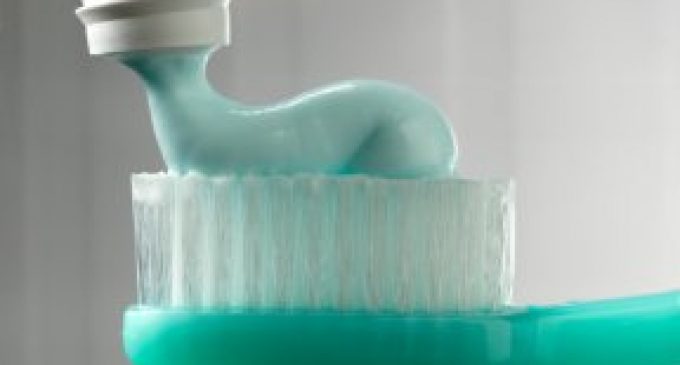Researchers from Sweden, Ireland and the USA believe fluorine formed in the stars

The fluorine that is found in products such as toothpaste was likely formed billions of years ago in now dead stars of the same type as our sun. This has been shown by astronomers at Lund University in Sweden, together with colleagues from Ireland and the USA.
Fluorine can be found in everyday products such as toothpaste and fluorine chewing gum. However, the origins of the chemical element have been somewhat of a mystery. There have been three main theories about where it was created. The findings now presented support the theory that fluorine is formed in stars similar to the sun but heavier, towards the end of their existence. The sun and the planets in our solar system have then been formed out of material from these dead stars.
“So, the fluorine in our toothpaste originates from the sun’s dead ancestors,” said Nils Ryde, a reader in astronomy at Lund University.
With doctoral student Henrik Jönsson and colleagues from Ireland and the US, he has studied stars formed at different points in the history of the universe to see if the amount of fluorine they contain agrees with the predictions of the theory.
By analysing the light emitted by a star, it is possible to calculate how much of different elements it contains. Light of a certain wavelength indicates a certain element. In the present study, the researchers used a telescope on Hawaii and a new type of instrument that is sensitive to light with a wavelength in the middle of the infrared spectrum. It is in this area that the signal is found in this case.
“Constructing instruments that can measure infrared light with high resolution is very complicated and they have only recently become available,” said Nils Ryde.
Different chemical elements are formed at high pressure and temperature inside a star. Fluorine is formed towards the end of the star’s life, when it has expanded to become what is known as a red giant. The fluorine then moves to the outer parts of the star. After that, the star casts off the outer parts and forms a planetary nebula. The fluorine that is thrown out in this process mixes with the gas that surrounds the stars, known as the interstellar medium. New stars and planets are then formed from the interstellar medium. When the new stars die, the interstellar medium is enriched once again.
The researchers are now also turning their attention to other types of stars. Among other things, they will try to find out whether fluorine could have been produced in the early universe, before the first red giants had formed. They will also use the same method to study environments in the universe that are different from the environment surrounding the sun, such as close to the supermassive black hole at the centre of the Milky Way. There, the cycle of stars dying and new ones being born goes considerably faster than around the sun.
“By looking at the level of fluorine in the stars there, we can say whether the processes that form it are different,” said Nils Ryde.








There are no comments at the moment, do you want to add one?
Write a comment